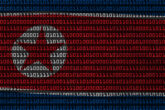August 08, 2019
Why North Korea is going ballistic with short-range missiles
North Korea is on an arms-testing binge. It began to fire short-range ballistic missiles in May, flaunted what apparently is a ballistic missile-carrying submarine on July 23, fired two more rounds of what appeared to be similar short-range missiles on July 25, another two rounds on July 31, another two on August 2, and yet another two on August 5. Even though US President Donald Trump and North Korean leader Kim Jong Un agreed to hold them soon after their impromptu meeting at the inter-Korean border in late June, negotiations on North Korea’s nuclear program have yet to convene. It now seems that any working-level talks between Washington and Pyongyang on the North’s nuclear program will be pushed back until some uncertain point after US-South Korean military drills end in a couple of weeks, marking mid-September as the earliest that bilateral negotiations could start, if conditions are right under Pyongyang’s terms.
But why is Pyongyang conducting such frequent fireworks now? North Korea typically has several objectives for every official action and statement on security matters, and so this is not a single-answer question.
One reason for these launches: Trump has given Pyongyang a pass on short-range ballistic missile tests, most recently repeating his mantra of “I have no problem, we’ll see what happens but short-range [missiles] are very standard.” So the regime is freely testing them to strengthen its military capabilities, the main objective of the July 31 tests, based on the North’s reporting of the tests through its Workers Party newspaper, the Rodong Sinmun, which is aimed at domestic audiences.
Read the full article in Bulletin of the Atomic Scientists.
More from CNAS
-
What Will North Korean Cybercrime Look Like in 2022?
North Korean hackers will likely continue to employ more phishing campaigns in the future while tailoring their level of obfuscation based on the target’s sophistication....
By Jason Bartlett
-
Duyeon Kim testifies before European Parliament's Committee on Foreign Affairs
Chairman McAllister, Vice Chairs, DKOR Chairman Mandl, and distinguished Members of the Committee on Foreign Affairs and the European Parliament, thank you for the opportunity...
By Dr. Duyeon Kim
-
China’s New Land Borders Law Is a Nightmare for North Korean Refugees
A combination of high-level pressure from foreign governments and steady support for grassroots refugee resettlement organizations and programs is the most practical way to as...
By Jason Bartlett
-
The Two Koreas’ Recent Arms Displays Are Sending Very Different Messages
North Korea has announced that it successfully tested a new, smaller submarine-launched ballistic missile, or SLBM, on Tuesday. State media claimed the missile—launched from t...
By Dr. Duyeon Kim


